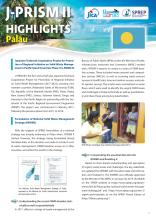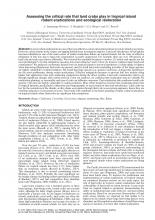Assessing the critical role that land crabs play in tropical island rodent eradications and ecological restoration

Island and Ocean Ecosystems
Available Online
Boudgelas, S.
,
Harper, G.A.
,
Russel, J.C.
,
Samaniego-Herrera, A.
2019
Invasive rodent eradications are one of the most effective conservation interventions to restore island ecosystems. However, achievements in the tropics are lagging behind those in temperate regions. Land crab interference in bait uptake has been identified as one of the main causes of rodent eradication failure on tropical islands, but the issue of effective mitigation of bait loss due to land crab consumption is poorly understood. For example, there are over 100 species of land crab and each may behave differently. We reviewed the available literature to answer: (1) which crab species are the most problematic? (2) what mitigation measures have been effective? and (3) how do invasive rodents impact land crab communities? We analysed a systematic dataset from six tropical islands to test two hypotheses: (a) bait uptake is highest when burrowing (Brachyura) land crabs are present; and (b) small land crabs (including juveniles of the larger species) are highly vulnerable to rodent predation. We found that large species (e.g. genera Cardisoma, Johngarthia and Birgus) are the most problematic during rodent eradications. Effective mitigation measures to prevent bait loss include using higher bait application rates and conducting eradications during the driest months. Land crab communities tend to go through significant changes after rodent removal. From our analyses, we confirmed pre-eradication data are valuable for eradication planning, as seasonality and type of crab can influence outcomes. Post- eradication data confirmed small crab species (

